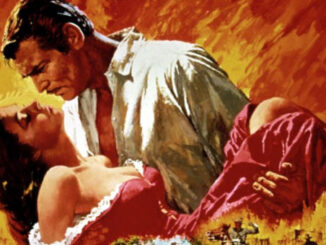 Class Action Park premiers on HBO Max on August 27.
Class Action Park premiers on HBO Max on August 27.
At the height of its existence and long before the physical space faded into history, Vernon, New Jersey’s Action Park was legendary.
Touted as the world’s largest amusement park with numerous water slides, go-cart tracks and other attractions, Action Park was a place that teens could go to and where they, according to the ubiquitous television commercials seen on cable across the tri-state area, “control the action.” And after all what could happen when a throng of teenagers are given free-range to “control the action”? Quite a lot, and those stories are what made up the legend of Action Park and the story told in the new documentary Class Action Park.
Co-directors Seth Porges and Chris Charles Scott III, working from a short Porges made about the place in 2013, have painted a picture of a place that could only have existed at the time it did. In Ronald Reagan’s America, deregulation was the name of the game and it is a game that park owner Eugene Mulvihill played well. With some shady money from the stock market, Mulvihill set out to build the greatest water park in New Jersey. He designed many of the attractions himself, with little regard to any kind of safety standards or even the laws of physics. Water slides would end with a ten-foot drop into pond. A wave pool would be so powerful that it would routinely knock park-goers underwater, earning it the nickname “The Grave Pool,” among the staff. It is small wonder that the park quickly earned such nicknames as “Class Action Park,” “Traction Park” and more.
The patrons and the staff were also the other key ingredients to the Action Park zeitgeist, and often it was hard to tell the difference. They were a generation of latchkey kids, often on their own for most of the day before cell phone technology would electronically tether children to their parents. Child labor laws were skirted so 14-year-olds who started working at the park as ride operators, leading to them rising to management positions while still in high school. The result is something akin to Peter Pan’s Lost Boys running an amusement park and the kids from Lord Of The Flies come for a visit, all fueled by a New Jersey machismo and a teenager’s belief that they were invincible.
A good portion of Class Action Park seems to be spent with the intention of mythologizing the place. In one clip, talk show host Jimmy Kimmel and Jackass star Johnny Knoxville trade chuckles about their teenage trips to the park. Former employees, now middle-aged men, look back through a haze of nostalgia at their time working their and even things like the after hours under-aged drinking and the casual sexual encounters between employees are all romanticized as simply the (mostly) consequence-less follies of youth.
One person who never put on the rose-tinted glasses is comedian Chris Gethard. A frequent Action Park visitor in his teen years, he tempers his reminisces about Action Park and its attractions with the knowledge that although people had fun at the park, they were very clearly putting themselves into danger.
But after the film spends a good chunk of time playing up the “Gee weren’t we crazy back then?” chuckles, it takes a dark turn as it shifts its focus to the first of the handful of very real deaths that happened at the park. George Larsson Jr suffered a traumatic brain injury when the sled he was riding on the park’s Alpine Slide ride shot off its concrete track with Larrson hitting his head on a nearby rock outcrop. It is here where we see Mulvihill’s ruthless when it comes to squashing lawsuits stemming from incidences at the park a process that needlessly and heartlessly prolonger the grieving and anguish that Larrson’s family went through.
The film does leave a few threads under-explored, such as the allegations over park owner Mulvihill’s alleged influence over local politicians, leverage that he used to keep the park open in the face of mounting injuries and safety violations. But the movie isn’t really interested in delving into that, instead leaving it as just one more of the many urban legends that surrounded Action Park.





